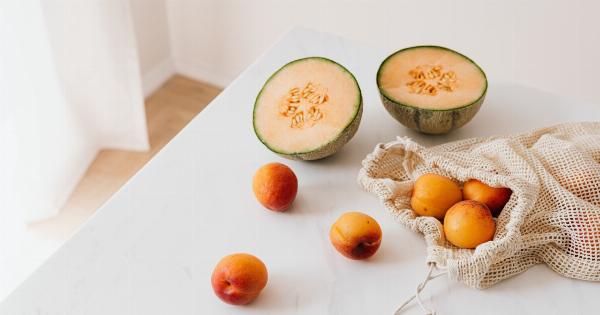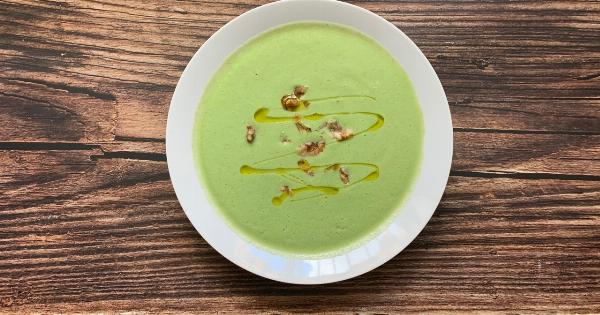Broccoli, often referred to as a “superfood,” offers numerous health benefits, including a rich source of vitamins, minerals, and dietary fiber.
However, convincing children to eat this nutritious vegetable can sometimes be a challenging task for parents. Many kids tend to shy away from the sight of broccoli on their plates, often opting for less healthy food choices.
If you’re struggling to get your kids to eat more broccoli, worry not! In this article, we will share ten effective tricks that will make broccoli more appealing to your little ones.
Showcase Broccoli as a Fun Food
One of the key factors in encouraging children to eat more broccoli is to present it as an enjoyable and exciting food option. By displaying broccoli in a fun way, it becomes more appealing and less like a chore to eat. Here are some creative ideas:.
1. Broccoli Trees on Their Plate
Instead of serving broccoli in plain florets, turn them into “broccoli trees.” Arrange the florets on your child’s plate in the shape of a tree, and encourage them to pluck off the “tree leaves” and munch on them.
This creative presentation makes eating broccoli a playful activity.
2. Broccoli Forest Pizza
Transform a regular pizza into a “Broccoli Forest Pizza” by adding broccoli florets as “trees.” Top it with cheese and other favorite toppings to entice your child.
The vibrant green color of the broccoli will attract their attention, making it more likely for them to happily devour it.
Introduce Broccoli in Different Forms
Another powerful strategy to get kids to eat more broccoli is by offering it in various forms.
Children may have their own preferences when it comes to textures and flavors, so providing different options can increase their chances of finding a way they enjoy consuming this vegetable. Here are a few suggestions:.
3. Broccoli and Cheese Nuggets
Mix chopped broccoli florets with shredded cheese, breadcrumbs, and egg to make delicious and nutritious broccoli nuggets. Bake them until golden brown and crispy.
The combination of the cheesy flavor with the added crunch will appeal to little taste buds.
4. Creamy Broccoli Soup
Create a creamy broccoli soup by blending steamed broccoli with vegetable or chicken broth, milk, and a touch of seasoning.
The comforting and smooth texture of the soup can make it easier for kids to consume and fall in love with the taste of broccoli.
Make Broccoli a Part of Favorite Dishes
One brilliant way to encourage your kids to eat more broccoli is to incorporate it into their favorite dishes. By pairing it with familiar flavors, they become more likely to accept it willingly. Here are some enticing suggestions:.
5. Cheesy Broccoli Mac and Cheese
Add finely chopped steamed broccoli to your homemade macaroni and cheese.
The vibrant green florets blended with gooey cheese will make the dish visually appealing, while the cheesy goodness ensures your child will not resist indulging in this nutritious version of a classic comfort food.
6. Broccoli-Stuffed Pasta Shells
Cook pasta shells and stuff them with a mixture of cooked broccoli, ricotta cheese, and seasonings. Top it with tomato sauce and bake until warmed through.
The intriguing shapes of stuffed pasta shells combined with the flavors of broccoli and cheese make for an irresistible dish.
Offer Broccoli as a Dip Companion
Pairing broccoli with a tasty dip can make it more enticing for children to eat. Providing a flavorful dip can help mask any bitterness and transform the experience of eating broccoli into a more enjoyable one.
Here are a couple of ideas for delicious dips:.
7. Cheesy Broccoli Dip
Combine pureed steamed broccoli with cream cheese, shredded cheddar, and a pinch of garlic powder. Serve it with tortilla chips or vegetable sticks as a snack or appetizer.
The creamy and cheesy dip adds a burst of flavor to the broccoli, making it a delectable treat.
8. Broccoli Hummus
Blend cooked broccoli florets with chickpeas, tahini, lemon juice, garlic, and olive oil to create a homemade broccoli hummus. Serve it with pita bread or crunchy carrot sticks.
The smooth and creamy texture of the hummus, combined with the mild broccoli taste, will make this an enjoyable dip for both kids and adults.
Involve Kids in the Cooking Process
Empowering kids by involving them in the cooking process can make them more invested in trying new foods.
Encourage your children to participate in age-appropriate tasks while preparing meals and let them experience the joy of creating something delicious. Here’s how you can engage them:.
9. Gardening Together
Plant broccoli in your home garden and involve your kids in the process. Let them water and nurture the plants, watching them grow from seeds to edible vegetables.
This interactive experience will make them more curious and willing to taste the result of their efforts.
10. Kid-Centered Preparation
When making a broccoli-based dish, assign age-appropriate tasks to your children, such as washing the broccoli, tearing the leaves, or stirring the soup.
By actively participating in the preparation, they will develop an appreciation for the effort that goes into cooking and be more motivated to taste the final product.
Conclusion
Encouraging your children to eat more broccoli can be an enjoyable and rewarding experience with these ten tricks.
By presenting broccoli in a fun and creative manner, introducing it in different forms, incorporating it into favorite dishes, offering tasty dip companions, and involving your kids in cooking, you can significantly increase their enthusiasm for this nutritious vegetable. Remember, consistency and patience are key, so keep trying these tricks and don’t give up. With time, your kids may develop a liking for broccoli and embrace it as a regular part of their diet.





























